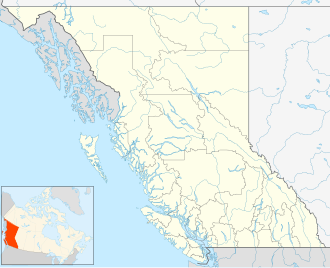| Graham Seamount | |
|---|---|
| Summit depth | 1,474 m (4,836 ft) |
| Location | |
| Location | North Pacific Ocean |
| Coordinates | 53°14′N134°31′W / 53.233°N 134.517°W [1] |
| Country | Canada |
| Geology | |
| Type | Submarine volcano |
The Graham Seamount is a seamount located in the Pacific Ocean off the coast of Haida Gwaii, British Columbia, Canada.
